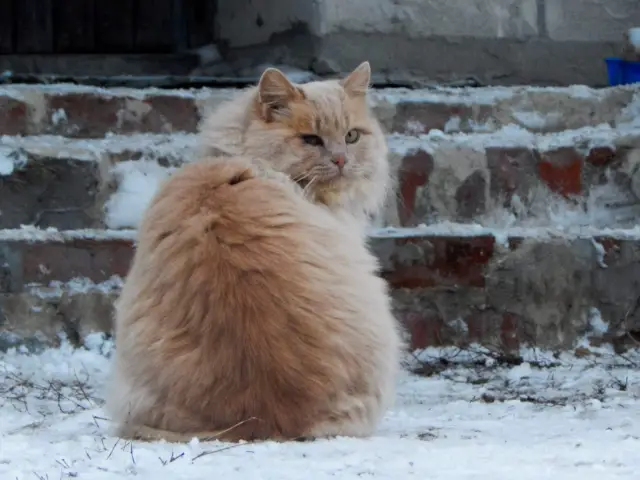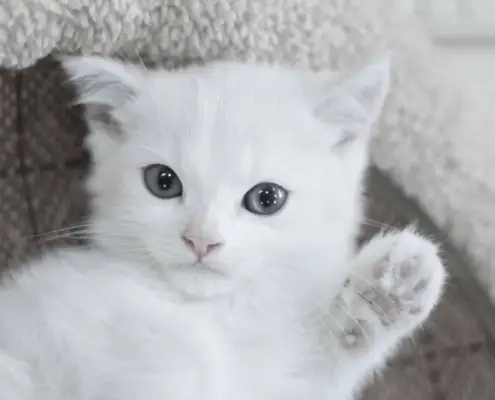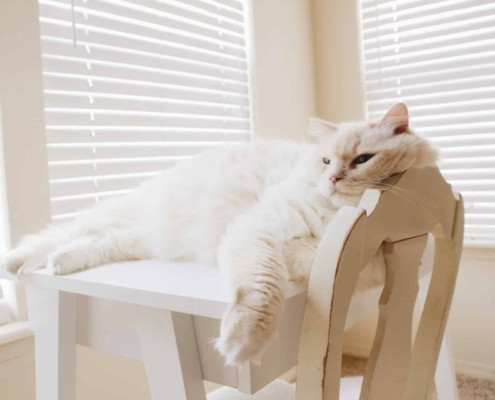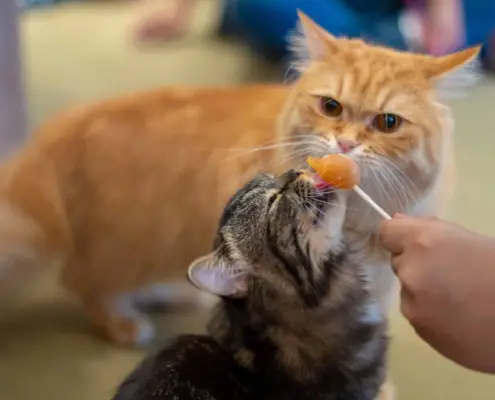
As a cat owner, it can be frustrating to constantly find fur all over your furniture and clothes. Shedding is a natural process for cats, but excessive shedding can be a sign of an underlying issue. In this article, we will discuss why cats shed and how to manage it.
Cat Shedding
Cats are known for their beautiful fur, but it comes at a cost – shedding. Shedding is a natural process for cats to get rid of old or damaged hair and to regulate their body temperature. While shedding is normal, excessive shedding can be a cause for concern. It is important to understand why cats shed to help manage their shedding.
Why Do Cats Shed?
Cats shed for a variety of reasons, including:
- Seasonal Changes: Cats shed more during the spring and fall when their bodies are preparing for warmer or cooler weather.
- Breed: Certain breeds of cats, such as Persians or Maine Coons, are known for shedding more than others.
- Age: As cats age, their fur may become thinner or more brittle, leading to increased shedding.
- Health Issues: Excessive shedding can be a sign of health issues such as allergies, parasites, or thyroid problems.
Understanding why your cat is shedding can help you determine if their shedding is normal or if you need to seek professional help.
Understanding the Shedding Cycle
To understand how to manage cat shedding, it is important to know the shedding cycle. Cats have a three-phase shedding cycle:
- Anagen Phase: During this phase, the hair follicles are active and producing new hair.
- Catagen Phase: This is a transitional phase where the hair follicles begin to shrink and the hair stops growing.
- Telogen Phase: The final phase is when the hair is shed and the hair follicle goes dormant.
The shedding cycle can take anywhere from a few weeks to a few months. Understanding where your cat is in their shedding cycle can help you manage their shedding.
Factors That Contribute to Excessive Shedding
While shedding is normal, there are factors that can contribute to excessive shedding, including:
- Poor Diet: A poor diet can lead to dry, brittle fur that sheds more than healthy fur.
- Lack of Grooming: Cats that are not groomed regularly can develop tangles and mats, which can lead to excessive shedding.
- Stress: Stress can cause cats to shed more than usual.
- Health Issues: As mentioned earlier, health issues can cause excessive shedding.
By addressing these factors, you can help manage your cat’s shedding.
How to Manage Cat Shedding
There are several ways to manage cat shedding, including:
- Grooming Tips for Reducing Shedding: Regular grooming can help reduce shedding. Brushing your cat daily can remove loose hair and prevent matting. Using a deshedding tool can also help remove excess fur.
- Choosing the Right Tools for Grooming: There are many grooming tools available, but not all are created equal. Using the right tool for your cat’s fur type can help reduce shedding.
- Dietary Considerations for Reducing Shedding: Feeding your cat a high-quality diet can help reduce shedding. Look for foods that contain essential fatty acids, which can improve the health of your cat’s fur.
- When to Seek Professional Help: If your cat’s shedding is excessive or accompanied by other symptoms, such as itching or skin irritation, it is important to seek professional help. Your veterinarian can help determine if there is an underlying health issue causing your cat’s excessive shedding.
Final Tips for Managing Cat Shedding
In conclusion, shedding is a natural process for cats, but excessive shedding can be a cause for concern. Understanding why cats shed and how to manage it can help keep your cat healthy and your home fur-free. Remember to groom your cat regularly, choose the right tools for grooming, feed them a high-quality diet, and seek professional help if necessary.
By following these tips, you can ensure that your cat is healthy and happy, and your home is free of excess fur.
If you enjoyed my article, I would appreciate you sharing it with your network.

Sima Ndlebe
Sima writes for CatBuzz. He is interested in Cats, Health and Fitness, and Entrepreneurship.
Published: 14 November 2023
Related Articles
Disclaimer
The content found on CatBuzz.org is presented on an "as is" basis and is intended for general consumer information and education purposes only. Any utilization of this information is voluntary and solely at the user's own risk.
None of the articles or content should be regarded as, or used in place of, veterinary medical advice, diagnosis, or treatment. The information provided on the website is purely for educational and informational intentions and should not be considered a substitute for professional guidance from a veterinarian or other qualified expert. The articles are designed to inform consumers about veterinary healthcare and medical matters that may impact their cat's daily life. It should be noted that this website and its services do not constitute the practice of any form of veterinary medical advice, diagnosis, or treatment. CatBuzz.org explicitly disclaims any liability for any direct or indirect damages or losses that may arise from the use of or reliance on the information contained within the content.
Consumers must consult a veterinarian, veterinary specialist, or another qualified veterinary healthcare provider when seeking advice regarding their cat's health or medical conditions. It is important not to ignore, avoid, or postpone seeking medical advice from a veterinarian or other qualified veterinary healthcare provider solely based on information obtained from this website. If you believe that your cat may be experiencing a medical issue or condition, it is imperative to promptly contact a qualified veterinary healthcare professional.



